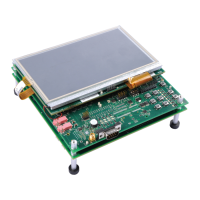Register Addressing
Register Addressing
Register Addressing
Register Addressing
Allows for efficient register to register
Allows for efficient register to register
operation
operation
16
16
-
-
bit and 32
bit and 32
-
-
bit Register Address modes
bit Register Address modes
Reduces code overhead, memory
Reduces code overhead, memory
accesses, and memory overhead
accesses, and memory overhead
AR0
AR0
–
–
AR7
AR7
AH
AH
AL
AL
PH
PH
PL
PL
T
T
TL
TL
DP
DP
SP
SP
16
16
-
-
bit Registers
bit Registers
XAR0
XAR0
–
–
XAR7 ACC P XT
XAR7 ACC P XT
32
32
-
-
bit Registers
bit Registers
Register addressing allows the exchange of values between registers, and with certain instructions
can be used in conjunction with other addressing modes, yielding a more efficient instruction set.
Remember that any ‘mem’ field allows the use of a register as the operand, and that no special
character (such as @, *, or #) need be used to specify the register mode.
Register Addressing
Register Addressing
–
–
Example
Example
MOVL loc32,ACC
MOVL loc32,ACC
MOVL @XT,ACC
MOVL @XT,ACC
MOV loc16,Ax,COND
MOV loc16,Ax,COND
MOV @AR1,AL,GT
MOV @AR1,AL,GT
MOV Ax,loc16
MOV Ax,loc16
MOV AH,@AL
MOV AH,@AL
User Guide &
User Guide &
Dis
Dis
-
-
assembler
assembler
use @ for second register
use @ for second register
Format
Instruction
Format
Instruction
B - 6 C28x - Appendix B - Addressing Modes

